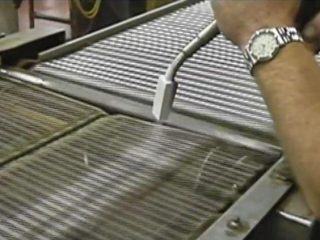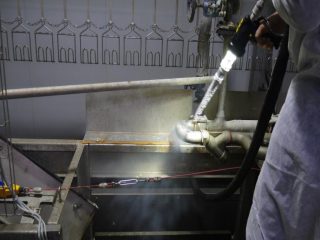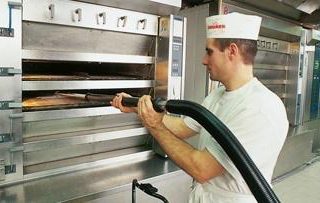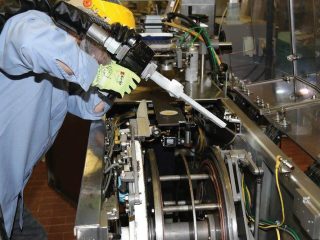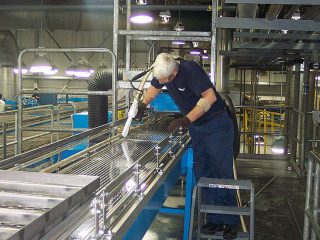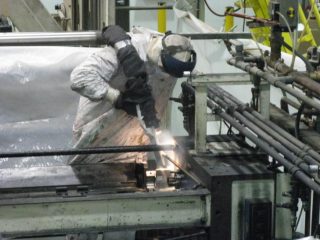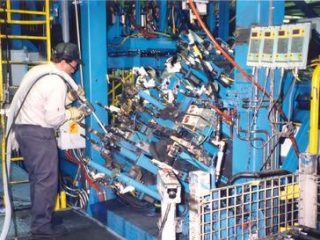Food and Food Oil Industry
Dry Ice Blast Cleaning for the Food and Food Oil Processing Industry
The food and Food oil industry faces the constant challenge of maintaining cleanliness and hygienic standards. Traditional cleaning processes that rely on water and manual scrubbing can be time consuming and require strenuous labor. The innovative process of dry ice blast cleaning is quickly gaining widespread acceptance as an alternative to conventional cleaning methods because it is capable of rapidly removing stubborn deposits from both processing equipment and the production environment.
Dry Ice
Dry ice is the term used to describe the solid form of carbon dioxide (CO2), a colorless, tasteless and odorless gas found naturally in our atmosphere. Dry ice is extremely cold (-78.5°C/-109°F) and when exposed to warmer temperatures, instantly vaporizes (sublimates) from a solid into a gas.
How dry ice cleaning works?
Dry ice blast cleaning units are completely mobile, self-contained systems. Small dry ice pellets are fed from the unit’s storage tank into a stream of compressed air. The pellets travel along a flexible hose, exiting through a high-velocity blasting nozzle at approximately the speed of sound.
Dry ice blast cleaning units are completely mobile, self-contained systems. Small dry ice pellets are fed from the unit’s storage tank into a stream of compressed air. The pellets travel along a flexible hose, exiting through a high-velocity blasting nozzle at approximately the speed of sound.
Dry ice blast cleaning units are completely mobile, self-contained systems. Small dry ice pellets are fed from the unit’s storage tank into a stream of compressed air. The pellets travel along a flexible hose, exiting through a high-velocity blasting nozzle at approximately the speed of sound.
- The turbulent stream of freezing dry ice pellets from the blasting nozzle strikes the contaminated surface and rapidly decreases the temperature. The extreme cold causes the surface contamination to become brittle and fracture.
- Unlike abrasive sandblasting, dry ice pellets instantly vaporize on impact with the contaminated surface creating an explosive cleaning effect. This dislodges residues and lifts the contaminants away, leaving nothing behind but a clean, dry surface. The removed materials generally become a light, dry residue, easily swept or vacuumed away.
Cleaning electrical equipment with dry ice
Dry ice is a relatively new alternative to grit or solvent cleaning of electrical equipment. It is often not feasible to have a motor taken out of service and sent to a shop for cleaning, either due to shear size or difficulty in dismantling the machine. Transportation to and from the service center can also add considerable downtime that can be very costly. Dry ice is a practical alternative. Dry ice cleaning can be done on site with minimal downtime. It is possible to clean the external parts of a motor with dry ice without any interruption of service.
Electrical Applications using Dry Ice Blasting
Remove build up on electrical components in all types of electrical equipment. Applications include windings on generators, circuit boards, equipment motors and more. All cleaned without damage and minimal down time.

